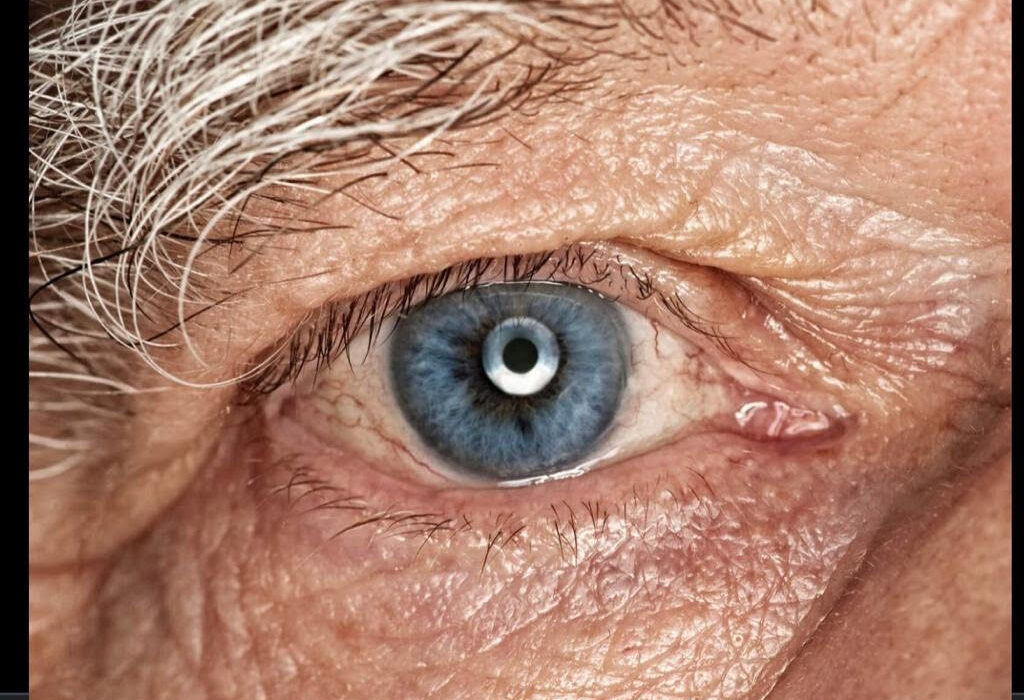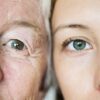EYE CHANGES DUE TO AGEING
As you age, the way your senses (hearing, vision, taste, smell, touch) give you information about the world changes. Your senses become less sharp, and this can make it harder for you to notice details.
Sensory changes can affect your lifestyle. As you grow older, you may notice some changes in your ability to see. Just as your body works a bit differently than it once did, the same rules apply to your vision.
Many of these changes are common. Some can be managed with simple lifestyle adjustments. Others can be a sign of an underlying medical condition that needs to be addressed.
Age sometimes bring changes that weaken your vision and eyes, but you can do certain things to maintain lifelong eye and overall health. The solution may be as simple as using brighter lights around the house to help prevent accidents caused by weak eyesight or seeing your doctor more frequently to screen for age-related diseases. It is important to talk with your eye doctor about changes in your vision.
How your vision changes as you age
All of the eye structures change with aging. The cornea becomes less sensitive, so you might not notice eye injuries. By the time you turn 60, your pupils may decrease to about one third of the size they were when you were 20. The pupils may react more slowly in response to darkness or bright light. The lens becomes yellowed, less flexible, and slightly cloudy. The fat pads supporting the eyes decrease and the eyes sink into their sockets. The eye muscles become less able to fully rotate the eye.
Many people experience subtle differences in their vision as they reach middle age and the decades that follow. Vision changes can include:
- Trouble seeing up close: Due to ageing there is hardening of the crystalline lens in the eye which gradually restricts accommodation leading to presbyopia. The formal term for this is presbyopia, and it generally starts after age 40. Presbyopia refers to the loss of ability to see close objects or small print. Development of presbyopia is a normal process that happens slowly over a lifetime. You may not notice any change until after age 35 or 40. People with presbyopia often hold reading materials at arm’s length. Some people get headaches or “tired eyes” while reading or doing other close work. You can improve your vision with reading glasses or multifocal (bifocal) lenses if you have presbyopia.
- Problems distinguishing colours: Reduction in number of cones due to ageing at the fovea causes a generalised reduction in colour vision. As you age, using lots of warm contrasting colours in your home can improve your ability to tell where things are, and makes it easier to perform daily activities. It may take you longer to distinguish shades of colour than it used to when you were younger, such as seeing how much black coffee is left in a dark blue mug.
- Poor light adaptation: As we age, muscles that control our pupil size and reaction to light lose some strength. This causes the Pupil to become smaller and less responsive to changes in ambient lightning. Slower adjustment to light changes starts. As you move from dimly lit to brightly lit rooms or areas, or vice versa, it can take longer than it used to for your eyes to adjust.
- Glare Sensitivity: Changes in light sensitivity due to aging is completely normal. When adults reach their 60s, their resting pupil size shrinks, causing them to receive only one-third as much light as normal. This means it’s harder for them to see in dim lighting and their eyes become more sensitive to glare. Problems with glare, brightness, and darkness may make you give up driving at night.
- Dry eyes (also called keratoconjunctivitis sicca). Dry eyes happen when the tear glands can’t produce enough tears or produce poor quality tears.
As we age, the amount of tears produced by our lacrimal gland naturally reduce, thereby leading to insufficient aqueous production, and significantly affect the eye’s ability to maintain moisture. Some medications prescribed to manage conditions prevalent among the older population e.g Diabetes, rheumatoid arthritis etc can increase your risk of developing dry eye as a side effect of the medication. Dry eye can be uncomfortable, causing itching, burning sensation, Gritty Sensation etc. Your health care provider may suggest using a humidifier in your home or special eye drops that simulate real tears. Common in women who have gone through menopause.
- Tearing (watery eyes, also called epiphora). Tearing or having too many tears, can come from being sensitive to light, wind, or temperature changes. Involuntional changes occur throughout the face and extremities due to age. Ectropion is an eye condition which is caused by muscle and ligament relaxation, due to ageing in which the eyelid turns outward, while Entropion is when the eyelid turns inwards due to age, causing your eyelashes and skin to rub against your eyes. They both usually occur in the lower eyelid. These two eyelid conditions cause tears not to drain properly into the puncta (opening of a tear duct), without proper drainage, the tears may pool and constantly flow over your eyelids.
- Retinal detachment: Retinal detachment occurs when the inner and outer layers of the retina become separated. Without a retina, the eye can’t communicate with the brain, making vision impossible. Symptoms of retinal detachment include:
- A sudden appearance of spots or flashes of light.
- Vision that appears wavy, as if you were under water.
- A dark shadow anywhere in your field of vision.
- Eyelid problems: Problems with your eyelids can happen with many different diseases or conditions. Reduction in the orbital fat with ageing causes the eyes to sink in accentuating the lid laxity. The eyelids protect the eye, distribute tears and limit the amount of light entering the eye. Pain, itching, tearing and sensitivity to light are common symptoms of eyelid problems. Other problems may include; drooping eyelids (Ptosis), blinking spasms (blepharospasm) or inflamed eyelids near the eyelashes (blepharitis). Eyelid problems often can be treated with medication or surgery.
- Cataracts:are cloudy areas that develop in the lens in the front of the eye. Due to ageing the crystalline lens in eyes starts to lose its transparency thereby leading to Opacification, which causes the appearance of senile cataract. Normally, the lens of the eye is clear like a camera lens. Cataracts keep light from easily passing through the lens to the back of the eye (the retina), causing blurry vision. Cataracts usually form slowly, causing no pain, redness, or tearing in the eye. Some stay small and don’t alter eyesight. If they become large or thick and have a significant impact on vision, they can almost always be removed with surgery.
- Age-related macular degeneration (AMD): AMD is the gradual loss of central vision. It happens when aging causes damage to the macula and wears it down. The macula is the part of the retina that controls sharp, straight-ahead vision. Objects may seem blurry, shapes may look distorted, or you may see a dark or empty spot at the center of your field of vision. With the more common form, known as dry AMD, vision loss can be slowed or prevented with eye-friendly nutrients, including omega-3 fatty acids, lutein, and zeaxanthin. The less common type, known as wet AMD, can cause rapid, severe vision loss. Though early treatment, which can include eye injections or laser treatment, can help preserve your vision.
Tips to keep your eyes healthy
There are many things you can do to promote eye health as you age. Making lifestyle changes can help prevent many eye conditions associated with aging.
- Quit smoking, if you smoke. Smoking increases your risk of developing age-related macular degeneration and cataracts.
- Eat a nutrient-rich diet. Certain nutrients like lutein, zeaxanthin, vitamin C, vitamin E, omega-3 fatty acids, and zinc help promote eye health and prevent certain eye conditions. Incorporate plenty of leafy green vegetables, fruits, nuts, and fish into your diet.
- Stay active and maintain a healthy weight. Obesity may increase the risk for glaucoma, age-related macular degeneration, and other eye conditions.
- Manage other health conditions. Keeping high blood pressure and diabetes in check can help prevent conditions like diabetic retinopathy that can otherwise lead to vision loss.
- Wear sunglasses. Protecting your eyes from ultraviolet light when you’re outdoors can help you maintain your vision.
- Schedule regular eye check-ups. An annual eye exam with an optometrist can help you catch eye problems early and get any necessary treatment before they can lead to issues like vision loss.
Staying in good overall health can also help you to feel better physically and mentally. This can help you better navigate changes to vision that may come with aging.



